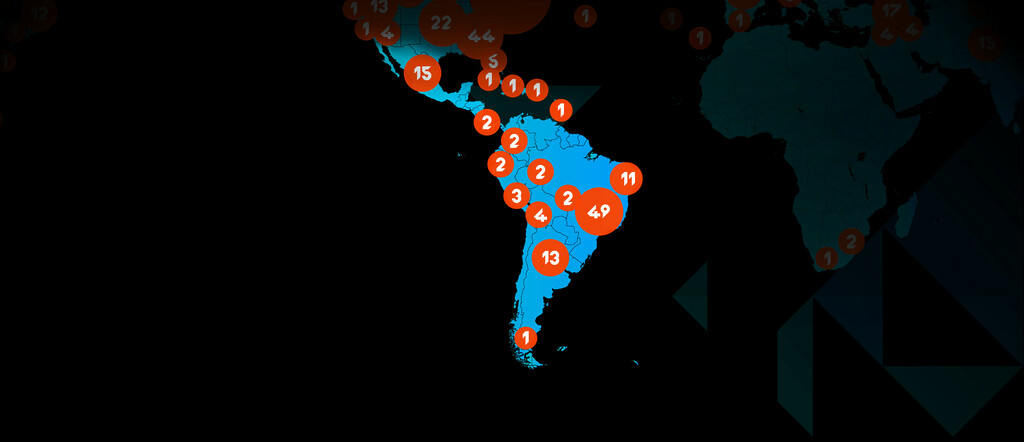
It’s Time to Redefine the High-performing Live Experience

It’s exciting to be amongst the attendees at the SportsPro OTT Summit USA in New York this week, especially after the events of the last two and a half years. I think it’s fair to say that we all took the experience of attending live sports for granted pre-Covid. Whether interacting with people at a conference event, being close to the on-court action at a basketball game or being fully immersed by the sound of a favorite singer in concert – there’s nothing quite like it. Once it’s taken away, you quickly realize the extent of this truth.
Of course, we can’t always be at the stadium, arena, or conference center, which is why the evolution of live streaming has been so important. Irrespective of the pandemic that accelerated these processes, content consumption patterns have shifted for a decade. Personal viewing on mobile devices – rather than the shared TV in the family room – is now the norm, as has binging on content that consumes more bandwidth due to the demands for UHD. This heightened connectivity has forced content providers to adapt due to the necessity and pace of change – and it shows no sign of slowing down.
Centralized CDNs will not respond to future content demands. – Read that again.
Indeed, the process of content delivery itself is now a far cheaper proposition than it ever has been in the past. There are now far more impactful ways to offer high-performing, scalable content, negotiate enormous spikes in traffic and deliver it to audiences all over the world.
But the parameters are moving at an astonishing rate. One of the craziest stats that I like to reference is from Statista, which found that 482.5 billion hours were spent on mobile live streaming apps worldwide in 2020. That first wave of the pandemic was a watershed moment for live streaming. The way we consume video has irrevocably changed – now, content delivery must evolve with it.
To date, CDNs have been a primary component for delivering live streaming content to end-users and maintaining the quality of experience that we all know and love. But the centralized CDN can no longer handle the growing demand for content, with caching servers located too far from users. And the delivery is often dependent on Communication Service Providers (CSPs), network peering, and downstream network conditions. It leads to unsatisfactory results: unpredictable latency + content buffering = an abysmal user experience
A new frontier for content delivery: leveraging what’s there in an all-new way.
In January, IDC reported how global spending on hardware, software, and services for edge solutions will reach $176 billion in 2022, with growth expected to further increase to $274 billion by 2025. To meet these expectations, it’s important to first focus on addressing delivery performance. But before we can do that, we need to redefine what performance should look like.
We believe we have reached a new frontier for content delivery. At Qwilt, we enable content providers to leverage our global network capacity to deliver content to the end-user at the true edge of the network. This includes the power of open caching and enabling CSPs to have more granular control over the deployment and operation of the CDN.
The list of efficiencies and cost benefits delivered by the technology layer is extensive, but the operating model is sometimes overlooked. Whether you call it partnerships, federations, or even just simply ‘fair’ – we believe that for consumers to get the experience they want, we as an industry must promote closer integration between publishers and internet service providers.
Consumers don’t care what happens in the background to get the big Champions League game live on their tablet while working out at the gym – or the highlight package of the crucial NFL playoff available on demand – they just expect availability. Their loyalty is to the content – not the underlying infrastructure. They will gravitate to the services that give them what they want – it’s just human nature.
By deeply embedding edge nodes in the service provider’s last-mile network, consumers receive the best possible viewing experience. Meanwhile, service and content providers reap the benefits of a satisfied customer base through reduced churn and significant data processing and content delivery efficiencies. This is unique to the industry – and I can’t stress this enough! The edge itself is a dated concept. Forget all of what you knew before – and let’s start concentrating on delivering the innovation and disruption within an operating model that is mutually beneficial.
Building the technology and partnership foundations
It doesn’t matter if you’re Manchester United, the LA Lakers, Real Madrid, or the New York Yankees; in a globalized economy, fans will watch your team in every corner of the world at every time of day. Everyone wants a piece of the live experience, and no one wants, what should be an immersive experience, spoiled by slow starts, buffering, or latency.
By democratizing the process of streamed content delivery, we can respond to this exciting new age of globalization, global audiences, and global fan bases. And by building these technological and partnership foundations today, we can get ready for the next wave of streaming services in areas like gaming, VR, the metaverse, and beyond….
Whether you’re attending the SportsPro OTT Summit USA today or not, please reach out, and let’s connect at the event or elsewhere!
Ready to take the next step?
We have a team of content delivery experts ready to answer your questions.
Related resources

Blog
Amazon’s “Diamond” points to Open Caching for live sports streaming

Blog
Live streaming records shattered again: How soon will we reach 100m?

Blog
Open Caching and CDN standards: The role of the SVTA and IETF

Event




